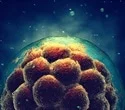
In terms of cell kinds, stem cells truly have limitless potential. These self-renewing cells, which may develop into any form of cell in the body, are found in specialized microenvironments called niches. The neural stem cell niche, the location of stem cells in the brain, has recently been the subject of new research by scientists in Japan.
The effects of hypoxic (low oxygen) circumstances on the brain stem cell niche during development were examined in a recent study from Tokyo Medical and Dental University (TMDU), which was published in the journal Inflammation and Regeneration.
The cells that make up the brain and nervous system are produced by neural stem and progenitor cells (NPSCs). It is known that NSPCs live in a hypoxic niche, which means that oxygen levels in the are lower than those of the surrounding tissues in the niche. It is not totally obvious how NSPCs retain themselves within their niche or what makes up this specialty.
A cell culture model of NSPCs obtained from embryonic mouse forebrains was used by the TMDU-led research team to examine the impact of low oxygen levels within the neural stem cell niche. Under low-oxygen and high-oxygen circumstances, these cells were grown into neurospheres or clusters of free-floating stem cells.





